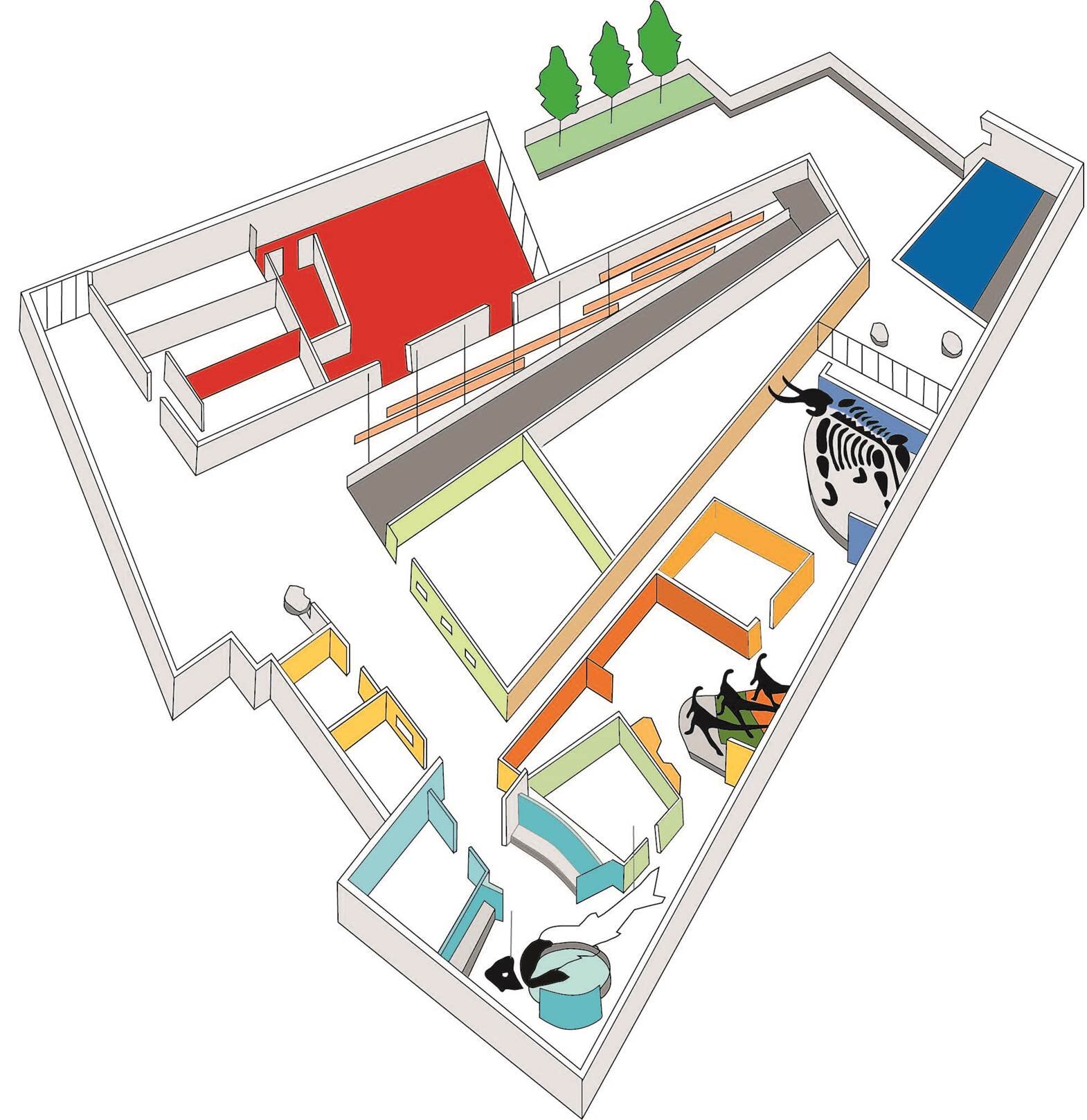A Journey Through Time
A Journey Through Time is an exhibit that comprises the bulk of the museum and visually displays an eon, from the dawn of life on Earth to present day. The exhibit contains fossil specimens range from microfossils to large Ice Age animals. See the Hyde Park Mastodon, a mastodon skeleton excavated by PRI in 2000 and put on display in September 2003.
Layout of the Journey Through Time exhibit. An annotated version of this map is available for download here.
When Continents Collide
Plate tectonics is the process by which continents move, mountains form, and ocean basins grow or disappear. Plate tectonics makes Earth's surface dynamic, causing volcanic eruptions and earthquakes, and explains many of the most significant events in the history of the Earth. This film explores the basics and development of plate tectonics, featuring Cornell University geology professors Bryan Isacks, Larry Brown, and the late John (Jack) Bird. Produced by: Paleontological Research Institution & David O. Brown (Passage Productions).
Animation of Rift Valley Formation During Splitting of Pangea
In the late Triassic period, the supercontinent Pangea began to split apart into the continents we know today. The process was similar the rifting taking place in East Africa today. In this video, you can observe how rifts form natural valleys, where lakes and rivers may form. In rocks from ancient rift valleys associated with Pangea, we find evidence of ancient environments such as fossils such as fish and dinosaur footprints. Video by the Paleontological Research Institution and its Museum of the Earth (YouTube).
Early History of Earth and its Life
The first four billion years—85%—of Earth history saw enormous changes in every Earth system. During this interval of time, known as the Precambrian, microbial life originated and diversified. Photosynthesizing bacteria led to an oxygen-rich atmosphere. Learn about early evolution of the Earth and its life in this film.
Life in Paleozoic Seas
Animals first appeared in ancient seas about 650 million years ago. Over the following several hundred million years animal groups diversified and went extinct in response to major global changes in climate, sea level, and mountain building. Learn about diversification of marine animal life in this film.
Life Diversifies on Land: Carboniferous Forests to Triassic Reptiles
As forest plants evolved and adapted to more upland environments, land animals also diversified. One vertebrate lineage gave rise to many familiar reptile groups, including the dinosaurs, and another included mammals among its descendants. At the end of the Permian period, around 250 million years ago, the largest mass extinction in Earth history disrupted the dominance of many groups on both land and in the sea. Learn about diversification of terrestrial life and the great end-Permian extinction in this film.
Age of Reptiles to the Age of Mammals
The dinosaurs and their pterosaur cousins dominated land environments in the Jurassic and Cretaceous periods, while other groups of giant reptiles such as plesiosaurs, ichthyosaurs, and mosasaurs dominated ocean life. A mass extinction at the end of the Cretaceous period killed off all the large reptiles, among many other kinds of organisms both on land and in the sea. One group of small dinosaurs–the birds–and the mammals survived the extinction and went on to expand into nearly every habitat on Earth. Learn about the life from the Age of Dinosaurs to present in this film.










